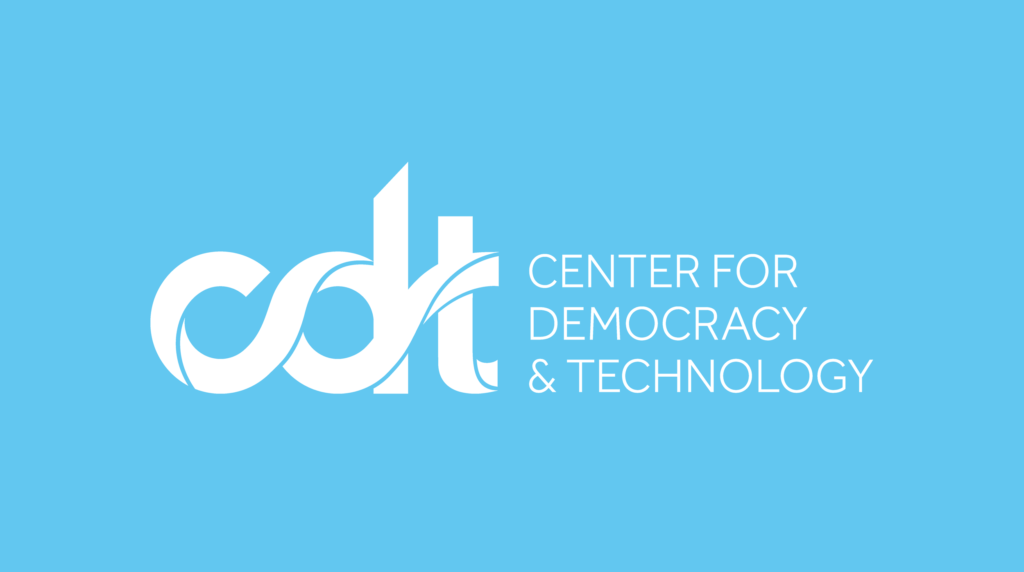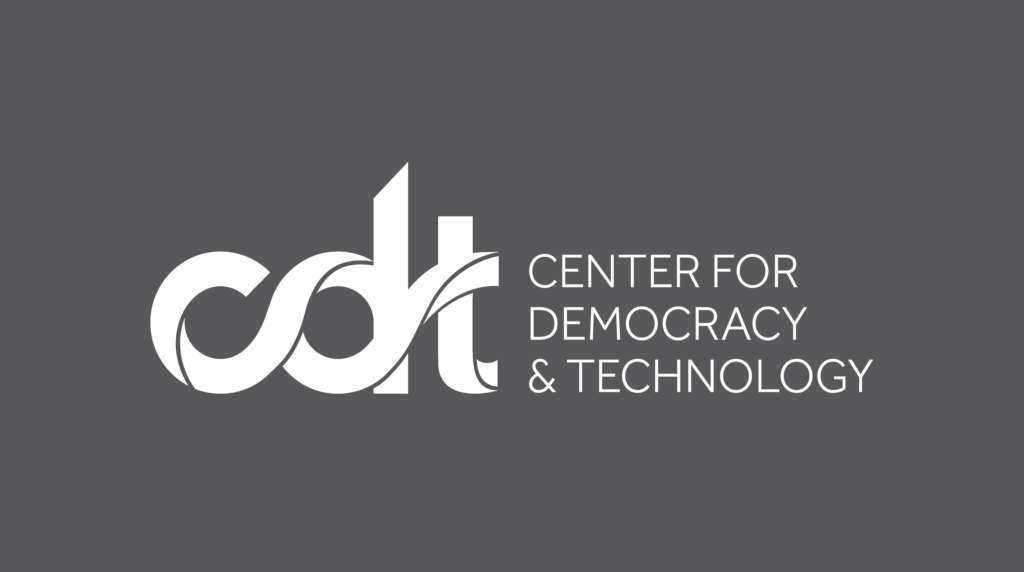CDT Research, Elections & Democracy, Free Expression
From Our Fellows: Policy Responses to Gender-Based Political Violence Online
By Gabrielle Bardall, Visiting Professor, Graduate School of Public and International Affairs (GSPIA), University of Ottawa and CDT Non-Resident Fellow
Disclaimer: The views expressed by CDT’s Non-Resident Fellows and any coauthors are their own and do not necessarily reflect the policy, position, or views of CDT.
From advanced democracies to closed autocracies, the landscape of political violence around the world has expanded into the digital realm, presenting complex challenges for mitigation and prevention. The landscape of political repression and violence has expanded to the digital realm and this is evident with the scale of online GBV experienced by politically-engaged women. Unlike offline political violence, which often involves identifiable victims and perpetrators, online harms are multifaceted and occur over varying durations, involving diverse actors from around the world.
Summing up key ideas from a recent chapter in a new book, Gender and Violence against Political Actors (ed. Bjarnegård and Zetterberg, Temple University Press, 2023), this blog explores policy responses to gender-based political violence (GBPV) online, categorizing them into three distinct approaches: institutional and legal responses, platform responses, and community-based responses. These approaches aim to address the diverse forms and intensities of online GBPV, the multitude of perpetrators, and the different digital and physical geographies in which it occurs. Before turning to policy responses, this discussion begins with an explanation of the spectrum of online violence, description of the broad range of perpetrators as well as the geography of the digital landscape.
Understanding the Spectrum of Online Gender-Based Political Violence (GBPV)
Online GBPV encompasses a spectrum of behaviors and intensities, ranging from incivility and hate speech to criminal acts such as death threats and harassment. This spectrum highlights the escalating nature of online violence, with various types often overlapping and interacting within a single incident. Responses must consider whether the harm results from a discrete incident or accumulates over time.
Online GBPV involves complex and often anonymous perpetrators, ranging from individuals to automated bots. Responses must be proportionate and adapted to the actions of the perpetrators. Identifiable individuals can be sanctioned by social media companies under their terms of service, or criminal law, but the vast majority of actors contributing to online GBPV are not criminally liable, as their actions do not amount to criminal conduct. Addressing these “indirect perpetrators” calls for community-driven action, including adapting platform algorithms to combat non-criminal abusive content and mobilizing bystander intervention to stifle abuse when and where it occurs in real time.
The range of perpetrators involved in GBPV is vast: from anonymous, hostile meddlers (domestic and international) to intimate partners (such as in cases of so-called “revenge porn”). Computational propaganda, which drives mis- and disinformation through algorithms and social media bots, further exacerbates the problem.
Online GBPV also takes place across a multitude of digital platforms, from social media to chat rooms and blogs. These platforms offer different levels of content moderation and user control, each of which requires different strategies to mitigate and eliminate abuse and hate.
The geography of gender-based political violence in the online arena is not limited to different virtual spaces but also plays out at distinct offline locations, impacting possible responses. For example, in many Global South contexts, gender-based political violence in the online arena initiates and is concentrated in urban centers (especially capital cities) where there is greater internet access and infrastructure. From there, its messages often spread into peripheral areas including through traditional media (radio, etc) that picks up on content originating online. In both hybrid and advanced democracies, online GBPV messaging crosses international borders, through diaspora groups that engage in hateful speech about political women in their countries of origin or even through hostile foreign meddling campaigns. The good news is that precedent exists for regulating transnational cybercrime, including in the anti-terrorism sphere. Integrating knowledge about the transnational dimension of gendered online violence into existing frameworks can strengthen protections, enforcement, and prevention through coordination.
Adapted Responses to Online GBPV
Given the broad spectrum of the types of online GBPV, responses must be appropriately adapted to address these specific factors. These responses fall into three categories: institutional and legal, platform-based, and community-based.
1. Institutional and Legal Responses:
Institutional and legal responses aim to modify behavior through changes in normative frameworks, such as penalties for harmful behaviors, and justice restoration for survivors. While laws and institutions are the slowest to adapt to change, they can be the most powerful in driving lasting improvement due to their ability to penalize perpetrators and influence attitudes and behaviors at a national or even international level.
Legal frameworks around online GBPV are still evolving and vary widely across different jurisdictions. National policymakers can integrate online GBPV into relevant criminal and civil frameworks, covering issues like harassment, privacy invasion, and disinformation. International bodies can establish consistent definitions of online GBPV, in alignment with existing international frameworks on GBV and offer guidance on normative frameworks.
2. Responses Involving Social Media Platforms:
While legal recourse can address the most egregious cases and create a deterrence effect, social media platforms can limit the amount of harmful content that appears on the web and minimize the impact of harmful content by acting quickly to cut it off when it occurs.
Platforms can establish and enforce clear terms of engagement, reiterating that gendered harm and hate speech is not accepted on their respective services, under their terms of service. Effective platform content management includes a combination of both AI-driven content flagging and human review and intervention to remove harmful content. Platforms can provide resources for users to recognize and intervene against online abuse, as well as publish data on their efforts to combat GBPV. These solutions are voluntary, however, the platforms are increasingly being held legally accountable for hateful content on their platforms around the world. For example, the EU Digital Services Act mandates the largest online platforms to conduct regular risk assessments and adopt risk mitigation measures, with a requirement to address gender-based violence specifically identified in the law.
3. Community Responses:
Community responses include actions by both online and offline actors who may be affiliated with an organization or professional group (NGOs and other civil society groups, professional journalists) or independent citizens and bystanders to harmful behavior online. These responses focus on immediate care, harm reduction, and mitigation, involving individuals and organizations.
The most flexible of all approaches, community responses can adapt to the different types and intensities of violence across the spectrum and are less constrained when faced with cases with a multiplicity of perpetrators (including extra-territorial), incidents occurring across multiple platforms or in different regions or countries.
Community responses cover a broad range of actions. Online bystander intervention strategies train people to recognize harassment and diffuse harmful situations. Helplines, online resources, and pro bono legal services support victims. Digital literacy campaigns educate users about online abuse and encourage proactive responses. Collaboration with media groups ensures responsible reporting on GBPV.
Conclusion
Addressing gender-based political violence online requires a multifaceted approach that acknowledges the diversity of perpetrators, the evolving digital landscape, and the varying intensities of harm. Combining institutional and legal responses, platform-based interventions, and community-driven actions offers the best chance for mitigating online GBPV and fostering lasting change. While many of these strategies have emerged from related fields, their integration into responses specifically tailored to online political GBV is essential for combating this pervasive issue effectively. Collaboration between stakeholders in democracy promotion, women’s rights, digital security, and gender-based violence is crucial for implementing these strategies and turning potential innovations into reality.


